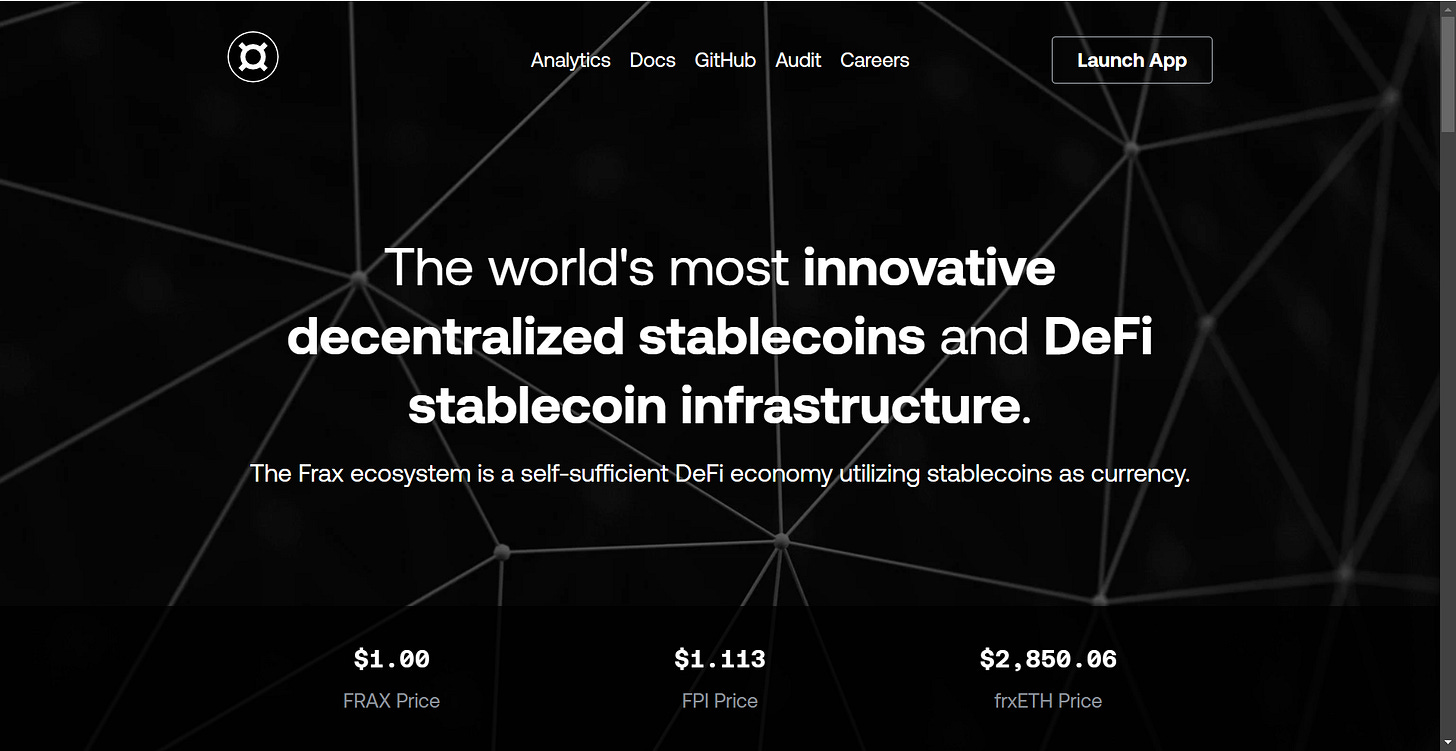[Serenity Premium] FRAX [Initial Review May 2024]
FRAX was one of the earliest algorithm-based stablecoins and it survived till today. In a governance proposal raised this Feb, the issuer seeks to raise the collateralisation ratio to 100%, making it no longer algorithm based. This probably marks the end of algorithm-based concepts for stablecoins. On the other hand, the launch of USDe by Ethena has reduced the need to over-collateralise. So now the industry for issuing stablecoins is merging, no more wild algo-coins, no more over-collateralisation.
Another trend I have noticed in the stablecoin industry is the rise of protocol-owned liquidity. It probably started with DOLA (by Inverse Finance) to save it from bankruptcy, but later it proved to be a smart idea. Stablecoins issuers, if they have issued against fiat, are now all buying Treasuries, such as USDM, STBT, and even DAI. If the stablecoins are issued against other cryptos, these collaterals can be invested. And one step further from here: as long as the protocol is collateralised, the issuers can create some buff, minting some additional stablecoins, not for selling purposes but purely for liquidity management purposes. This is called Protocol-owned liquidity. Frax Finance is now a typical case. In this article, we will review the status of FRAX's collateralisation and explain the pros and cons of protocol-owned liquidity for stablecoins.
Summary of FRAX's Collateralisation
There are a total of 730m FRAX issued on 14 chains, with 89% on Ethereum. This does not take into account the adjustments due to Frax Bonds, which might give 1 or 2 million difference due to bond maturity.
Keep reading with a 7-day free trial
Subscribe to Serenity Research to keep reading this post and get 7 days of free access to the full post archives.


